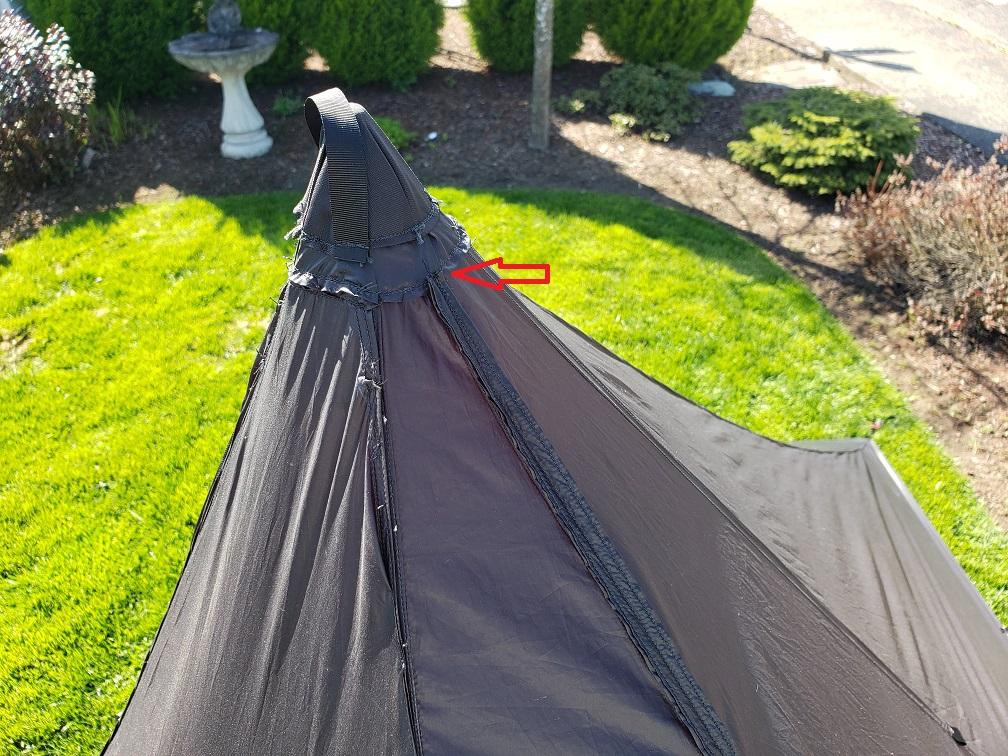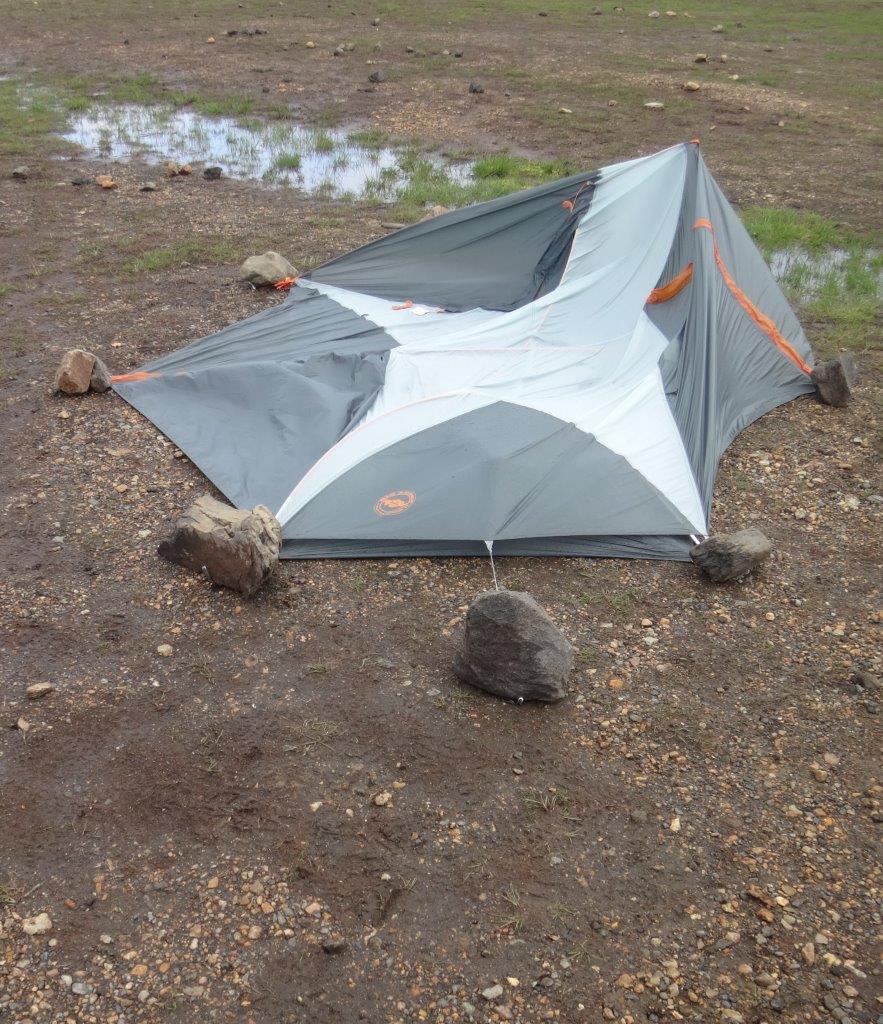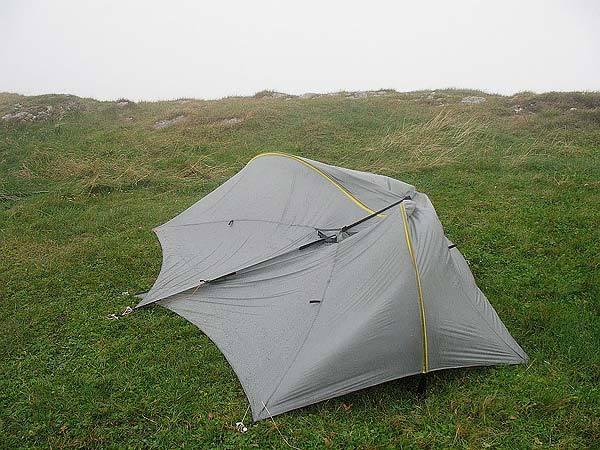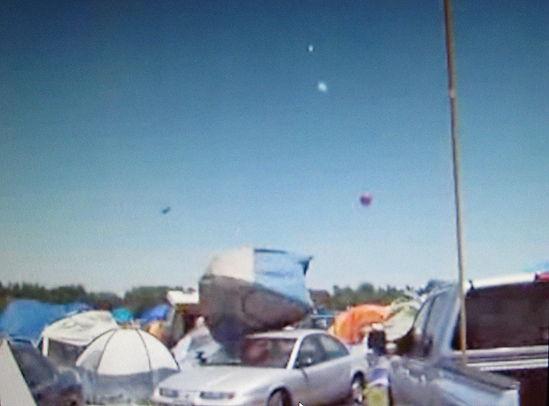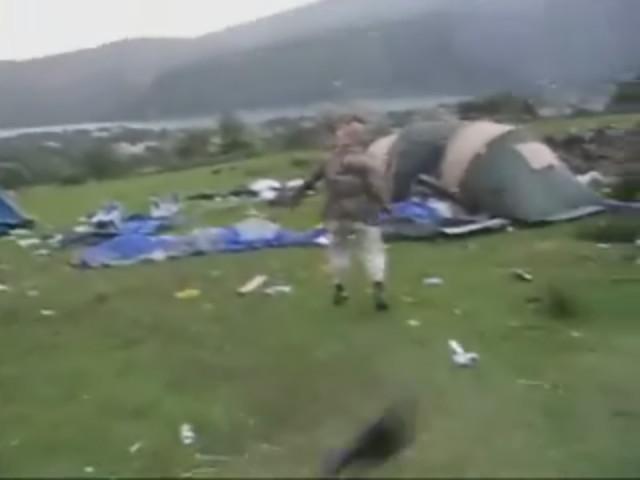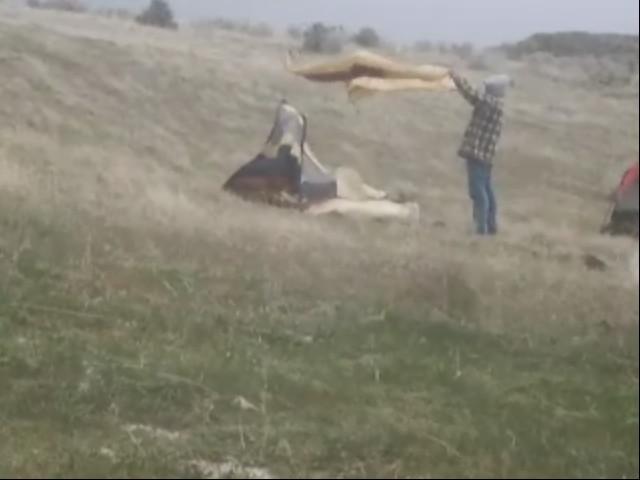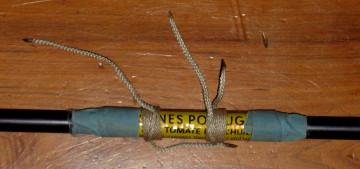Topic
why tents fail in the wind
Forum Posting
A Membership is required to post in the forums. Login or become a member to post in the member forums!
Home › Forums › Gear Forums › Gear (General) › why tents fail in the wind
- This topic has 172 replies, 33 voices, and was last updated 4 years, 11 months ago by
 Roger Caffin.
Roger Caffin.
-
AuthorPosts
-
Mar 21, 2020 at 9:46 pm #3637167
Craig, I’m guilty of thread drift as charged.
However the tent photos previous to my “drift” do shed some light on design as it obtains to distributing wind load forces. Some newer tents with pole hubs and intersection connectors do tent to spread wind load to other poles instead of one pole taking most of the load. That may be a factor when designing for wind loads in future tents.
This thread is not just about stakes but the entire wind load situation.
Mar 21, 2020 at 9:50 pm #3637169Exped “needs” to make it fly first?
I was trying to make the point that unlike most of the pop-up tents I see these days, the Gemini is not 100% mesh. So, yes, some rain will get on it, but not as bad as some others that are all mesh.
It ain’t perfect, but I have had some wonderful trips with that tent! It is so much sturdier than the Big Agnes/MSR, etc, tents that I see, by a mile.
We also have other tents that pitch fly first, and they’re great, but we still love our Gemini II!
Mar 21, 2020 at 11:38 pm #3637173So, yes, some rain will get on it, but not as bad as some others that are all mesh.
And ‘not as bad’ is meant to be good?
Meanwhile, other tent designs do not ever let rain under the fly.
My mind boggles somewhat.Cheers
Mar 22, 2020 at 8:11 am #3637193I took a 3.5 inch wide strip of fabric. 7 feet long. Along the grain. About 0.25 ounces.
Folded over 6 times and sewed it to make a strip about 1/2 inch wide.
Sewed that to the ridge:

Red arrow points to the top of the strip.
Doesn’t seem to make any difference, but maybe the ridge isn’t as stretchy. At least it didn’t seem to hurt anything.
Now I need a trip where it’s windy to test this out.
When I was sewing it one time I accidentally captured a piece of fabric underneath. “Damn It!”. Ha, ha, ha,… Oh well, only about 1 inch of seam to rip out, and it was part of the strip, not the tent.
Mar 22, 2020 at 9:39 am #3637209I think that we can all agree that the theory behind tenstakes pulling out is prety complex. In general, situations like this are studied by Civil Engineers and they develop best practices and guidelines.
In the back of my head, I tend to believe that soil compression is nonlinear and a hiogher load will “pre-load” the soil providing a better anchor. It is difficult to really find information about soil properties.
Theh second thing that comes to mind is the engineering concept of teh Goodman diagram. With respect to fasteners like bolts, higher pre-loads under cyclic loading not fatigue as fast as those under lower loading and that the longer the bolt the better. I believe that this is one of the reasons that old car cylinder heads preferred long bolts. Spitballing here a bit.
Mar 22, 2020 at 11:32 am #3637225There are several analogies I can think of for this situation in addition to the hammer/nail example;
- pneumatic impact drivers for wheel lug nuts
- electric impact drivers for screws
- hammer drills for drilling into concrete
If you’ve ever tried to drive a long wood screw in with a regular cordless drill, then tried to do the same thing with an impact driver, you know what I’m talking about. It’s almost like magic how well these tools work. They all rely on high impulse forces that overcome high static friction. The length of the impulse force is short, so you need many repetitions to make any progress on moving whatever you’re trying to drive.
I think it’s a pretty similar situation though; flapping tent panels making many hammer-like blows on the tent stake causing the earth around it to slowly move and loosen.
Mar 22, 2020 at 12:24 pm #3637232I agree that impulse/impact loads are very effective at breaking loose certain items. What is confounding about the OP was that the two conditions were a low pre-load and a high pre-load. Assuming that the the inputs were similar, the stake with the low pre-load demonstrated more “wiggle”.
Mar 23, 2020 at 12:39 am #3637312Re: “The alternative, for pole carriers, would be a hybrid trekking-pole/bendy-pole design like the original TrekkerTent Edge 1.” Geoff, the owner of Trekkertent posted about his trekking pole design on BPL a number of years ago. Would dig it out if there were time.
Re: “Endless waffle.” Available at the Pancake House? From watching guitar demo clips for my bro, got used to putting the cursor arrow on the bottom line, and fast forwarding to when the guy finally stops talking and starts playing. Bro finally found his dream guitar. Thank goodness.
Re: “EXPED needs to put the pole sleeves on the FLY”
This is also in line with Roger’s thinking, oft expressed.
Drifted a bit from this with the link to the Kuiu tent that used external clips, instead of sleeves. The video of the tent under the blast of the propeller on a swamp boat is worth looking at. Perhaps I differ about the need for pole sleeves vs clips partly because I have a dome that uses pole clips, and find it pitches much more quickly than any tent I’ve had with sleeves, and is more rigid and stable despite the use of clips.
The other big issue with pole sleeves is whether they need to be attached to the outer fly. Suggest an approach, not thinking in terms of inners and outers; but rather, mixing them a bit.
Notwithstanding its weight, the Gemini tent, with its pole sleeves on the inner, is said to be quite stable. Ditto for the Terra Nova Solar 2, well reviewed for use as a winter tent; although arches instead of hoops would shed snow better and prevent pooling. I think that the stability of the Gemini and similar tents is not related to the pole sleeve location; but rather, to the two pole crossing design. It was tents like the Gemini that attracted me to the double-cross designs in the first place. However, I also learned from looking at a tent EMS once marketed that a tent like the Gemini could be very unstable and a disaster in the wind if poorly designed.
The inner/outer canopy that is pitched first can consist of the vestibules, attached to a breathable solid but water resistant inner, and produce a structure that is both flexible and rigid. So it is very hard for me to see the need to place pole attachment sleeves on the fly. If the fly is securely attached over a stable and solid inner, with ample overlap over a portion of the vestibules, I don’t envisage the wind distortion in the fly that Roger sees.
It is a great advantage to use pole clips, and a seamless fly over them that can easily be installed, removed or replaced when available fabrics get lighter, stronger and reasonably priced. Am not going to chuck these advantages for an outer that is adorned with many seams and pole sleeves, because I think that one rigid structure is enough. Have never been happy with inners clipped inside outers, and that feeling may be why the industry has stuck with supporting the inners and attaching a fly on top. They don’t want to change, and devotees of hanging inners don’t want to either. There are good arguments on both sides. The solution may be hybrid construction that combines the best of both approaches.
Mar 23, 2020 at 1:15 am #3637316I don’t envisage the wind distortion in the fly that Roger sees.
Like this?

hard for me to see the need to place pole attachment sleeves on the fly.
If the poles can slide relative to the fly, you can get this effect under high winds.

a seamless fly over them that can easily be installed, removed or replaced
No such thing, unless your tent is flat. There will be seams!may be why the industry has stuck with supporting the inners and attaching a fly on top.
They are catering to a large market, but one which does not go up in the mountains. They go to music festivals and so on, like this one. Yeah, they are all tents in the air.

This is part of a sequence I rather like: a music festival in the UK which was hit by a sudden squall.

The guy in front of the tunnel tent is supposed to have emerged after the damage and asked ‘what happened?’. The people in the tunnel tent were eating and did not notice the storm.Cheers
The Biased OneMar 23, 2020 at 3:46 pm #3637383Rog,
What I see in the photos of “failed tents” is a lack of guying, perhaps because there were no guy points on the flys.
I’ve also seen on some Hilleberg tents that the pole sleeves were large enough to accommodate an extra pole for rigidity. I can just barely put two poles in the main sleeve of my Tarotent Moment DW. Thus I will use guy lines and do without that extra sleeve pole, relying on my DIY under-the-fly crossing pole to supplement the hoop pole.
Again, the subject of tents and high winds is about poles and guys as much as stakes.
Mar 23, 2020 at 6:38 pm #3637413Yes, but the single most important factor is design.
</bias>Cheers
Mar 23, 2020 at 7:35 pm #3637415Here is the stress test video Sam mentioned of the Kiui dome with external pole clips: https://www.youtube.com/watch?v=8hEX5R761Xc
Mar 23, 2020 at 10:29 pm #3637454Stumphges, yes that is the video. Thought I’d posted the link earlier on this thread, but maybe not, so thanks. BTW, it is spelled Kuiu. It is an island off the coast of southern Alaska, but Google won’t tell me the origin of the word, which probably comes from the people who were native to the area.
Roger, re:
“I don’t envisage the wind distortion in the fly that Roger sees.”
“Like this?”No, not like any Big Agnes tent. I can’t go into the differences yet again, because I’ve been timed out by the debate moderators. No applause, please.
“If the poles can slide relative to the fly, you can get this effect under high winds.”
That is why a structurally sound frame is necessary under the fly. Then the poles won’t slide, and the fly over them won’t slide if securely attached.
“No such thing,” as a seamless fly. OK, will put some seams on, but it will just add weight. All right, all right, was thinking to put some seams at the ridge, and at the juncture of the fly and fly extensions. Just to make construction easier. Recall that the canopy in the original prototype posted on BPL and linked umpty times, had only the ridge seam. The dome shape is created by the greater expansion of silnylon on the bias.
“They are catering to a large market, but one which does not go up in the mountains. They go to music festivals and so on, like this one. Yeah, they are all tents in the air.”
Surely you know that many makers of what you call “pop-ups” cater to backpackers.
“The people in the tunnel tent were eating and did not notice the storm.”
Agree that we must not discriminate against the hearing impaired, or any other minority.
Will leave it at that. Hope you are doing fine. Alas, we are not.
Mar 23, 2020 at 10:50 pm #3637457because I’ve been timed out by the debate moderators
Wicked lie! Scurrilous fabrication!
I am sure lots of readers are being entertained.That is why a structurally sound frame is necessary under the fly
I will certainly go along with that, although when you can’t put guy ropes on the poles that can be tricky in a high wind.

we must not discriminate against the hearing impaired
Snicker!BTW, while I did watch the video, I note that they pitched the tent in dead calm, before they switched the blower on. I would like to see them get the tent up with the blower already going full bore. The results might be a bit different.
Just make the tent!
CheersMar 24, 2020 at 1:09 pm #3637548Tent design, guylines, tent stakes, soil conditions, yeah it is all complex system. Let’s assume that we all convert to tunnel tents. Looking at these last few pictures though, it you had to pick one of these elements to fail, wouldn’t you want it to be the tent stake? Yes, the tent losing the suport and collapsing over you is bad, I get it. Isn’t having a pole snap or the fabric tear worse? Just thinking out loud here.
Mar 24, 2020 at 2:51 pm #3637576Thing is, when you talk about something failing, that usually means that the weather has become a bit extreme. It is no longer a matter of comfort; rather it can be a matter of survival.
Now, points of failure. I can speak to tunnel tents as I have had most experience with them.
The very last things you want to fail are the two windward corner anchors. If they go the whole tent can easily be lost. If they hold, then the tent and its occupants survive. The two downwind anchors are the next in importance, but they are not likely to fail.
I have had guy ropes fail in a storm – in ‘When Things Go Wrong’ here on BPL I mention that we lost about 6 out of 8 side guys (Spectra) due to fretting or abrasion overnight. The guy ropes were coated in ice to about 20 mm thickness: they looked unreal. Fortunately I had pitched the tent end on into the wind, and all four corner anchors were holding well.
Yes, I have had poles break. Most unfortunate. They were Easton’s new and still experimental 7178 alloy (since withdrawn), and they had a brittle fracture at the peak. I had to do a repair in the field.

That is three layers of sardine can wrapped tightly and secured with nylon cord and patching tape. It lasted.I have never had the fabric fail. Frankly, I don’t think good silnylon would just fail. It would need to be damaged by something else.
Looking at the structure as a whole, a tunnel is probably the safest and easiest to pitch and strike in any storm. There’s a tutorial in our series on Tunnel Tents here on BPL. It takes about the same time in fine weather or in a storm.
Cheers
Mar 24, 2020 at 4:24 pm #3637602OK, tent systems shouldn’t fail and tunnel tents are the best. That being said, if a component is going to fail, wouldn’t it be best if it was the stake pulling out?
Mar 24, 2020 at 7:41 pm #3637639wouldn’t it be best if it was the stake pulling out?
That question is too vague to be answered with a single yes/no.AS I said above, a good tunnel tent pitched end-on to the wind can lose its side guys or tent pegs without too much hassle. I did notice on that trip around 5 am that the poles were vibrating a bit, and that was so unexpected that I got out of the tent to see why. Maybe I should make that I crawled out of the tent, because standing up was not a good idea in that wind. The real hassle was that, without the guy ropes, I could no longer find the tent pegs under the snow! We did come back a year later and searched, but the snow melting had migrated them.
On another trip we did have to help support a very early 2-pole tunnel against a serious buffeting wind from the side one time. In that case the guy ropes were OK: the problem was the huge fabric span between the poles. That was far too big. I had misjudged the likely direction of the wind when pitching in calm weather.
But if an end peg at the windward end of a tunnel is lost, everything goes to hell in a handbasket. You absolutely do NOT want that to happen.
So the only answer I can give is that it all depends on WHICH peg is lost.
Cheers
Mar 24, 2020 at 11:00 pm #3637667Great pix, Roger. Love the one of the Big Agnes with the huge rocks all around, but collapsed because the framework inside has failed.
Mar 25, 2020 at 8:12 am #3637704Sam, sorry I hadn’t noticed that you’d already posted the Kuiu Mountain Star video.
Sam, Roger, apologies, but what is wrong with external poles with clipped to the fly? The tent in the video performs far better than most “pop ups” would in 65 mph winds. It also offers dry setup and entry. As far as domes go, it appears to maybe be best in weight class. Sure, it’s still going to be hard to set up in high winds, but that’s about the only thing wrong with it that I can see.
Mar 25, 2020 at 2:58 pm #3637749what is wrong with external poles with clipped to the fly?
Well, poles attached to the fly are infinitely better than poles not attached to the fly: that is obvious from the photos.Clips vs sleeve: here you get into finer shades of grey.
With a sleeve the fabric is fully supported all along the pole, and in a storm that is excellent. Clips only attach the fly to the pole in a few places, so the fly can wobble around quite a bit more, and (worse) the clips make for a point loading which can threaten the strength of the fabric. Also with a sleeve the guy rope attachments are much better.Please remember that I am a bit biased, having been through more bad weather in the mountains than I want to think about. And yes, I have tried one or two of the ‘lesser’ tents over the years.
Cheers
Mar 27, 2020 at 1:48 am #3637999Re: “… what is wrong with external poles with clipped to the fly?”
Recall some older threads where there was considerable concern about the external poles creating snow and possibly wind fences. But agree with Roger that for a tunnel, where external pole sleeves, and narrow ones at that, work best; then that is probably the best design because it limits the amount of mischief the wind can create.
However, tents with a framework with at least two pole crossings don’t lend themselves to the external pole sleeves. Too much fuss pitching in high winds, for one thing. That’s why we see the clips to get the tent up quickly. But I think the tent should be designed so the clips are used to support the inner structure, so a smaller fly can attach quickly over the top and present a smooth surface to the wind. The attachment and guying of the fly is of course crucial to keep it taut in high winds. And the inner structure must not fail, as Roger’s photos show.
Recall an old thread of a clipped tent in Japan being pitched. It was a conventional two pole wedge dome with only one pole crossing at the top. Roger criticized it for all the usual reasons, but with the clips it went up in nothing flat on a very windy mountain top.
So there are trade-offs with all tent designs, including tunnels. But should advise that after racking the brain for years, may have finally come up with a good way to get the side guys through the fly and attached to the pole clips at the pole crossing points. It can be done without any fiddle factor, after the tent is completely up and fly fully attached. But will say no more until the tent is done, as there will undoubtedly be many changes and rivers to cross before then.
Mar 27, 2020 at 3:28 am #3638004a good way to get the side guys through the fly and attached to the pole clips at the pole crossing points
It can be done all right, with only a small fiddle factor. Rather rare in the field though. I don’t know why.Cheers
-
AuthorPosts
- You must be logged in to reply to this topic.
Forum Posting
A Membership is required to post in the forums. Login or become a member to post in the member forums!
Trail Days Online! 2025 is this week:
Thursday, February 27 through Saturday, March 1 - Registration is Free.
Our Community Posts are Moderated
Backpacking Light community posts are moderated and here to foster helpful and positive discussions about lightweight backpacking. Please be mindful of our values and boundaries and review our Community Guidelines prior to posting.
Get the Newsletter
Gear Research & Discovery Tools
- Browse our curated Gear Shop
- See the latest Gear Deals and Sales
- Our Recommendations
- Search for Gear on Sale with the Gear Finder
- Used Gear Swap
- Member Gear Reviews and BPL Gear Review Articles
- Browse by Gear Type or Brand.

